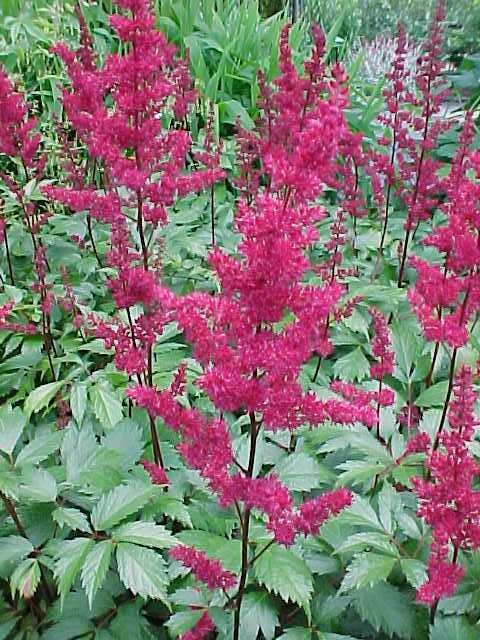| J C PLANTS LLC | HOMEPAGE |
| Telford, Pennsylvania | Perennials |
| Telephone: (267) 371 - 3050 | Grasses |
 Astilbe x arendsii 'Fanal'
Astilbe x arendsii 'Fanal'
| Common name | Astilbe |
| Hardiness Zone | 3 to 8 |
| Sun | Part shade to full shade |
| Soil | Dry to medium moisture |
| Flower color | Deep red |
| Bloom Time | June - July |
| Height | 12 - 18" |